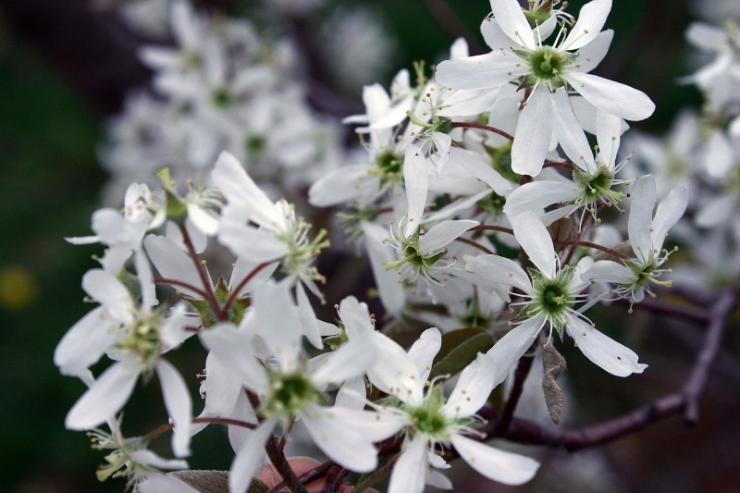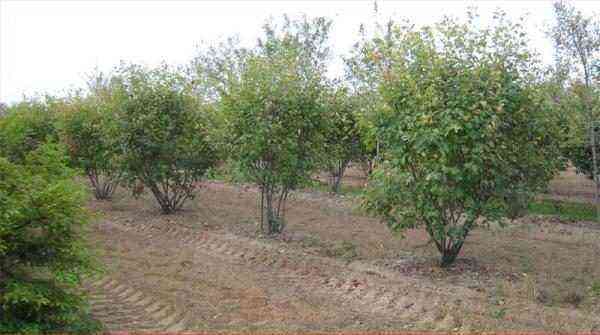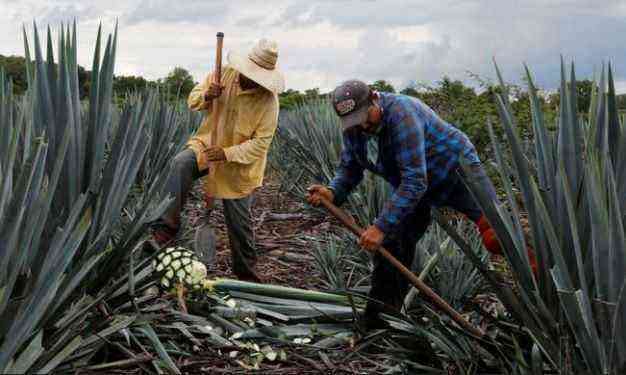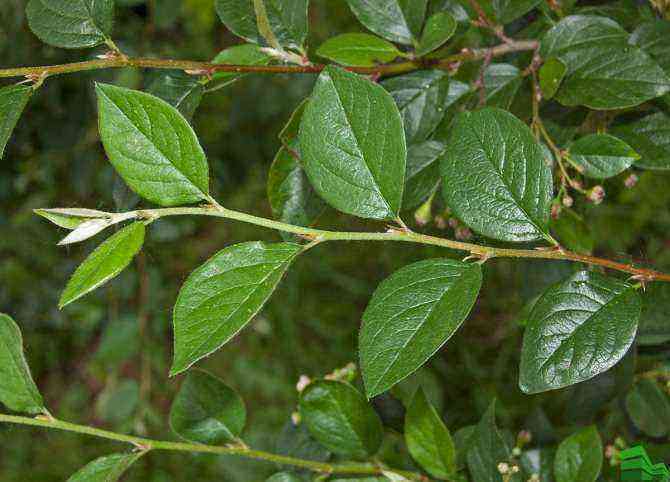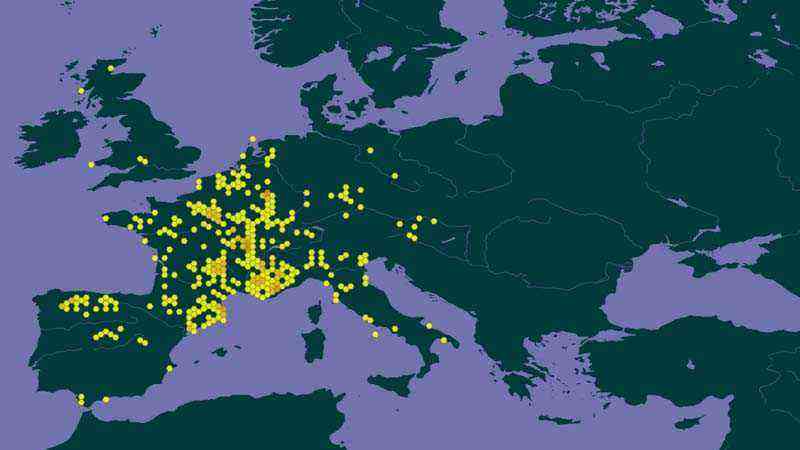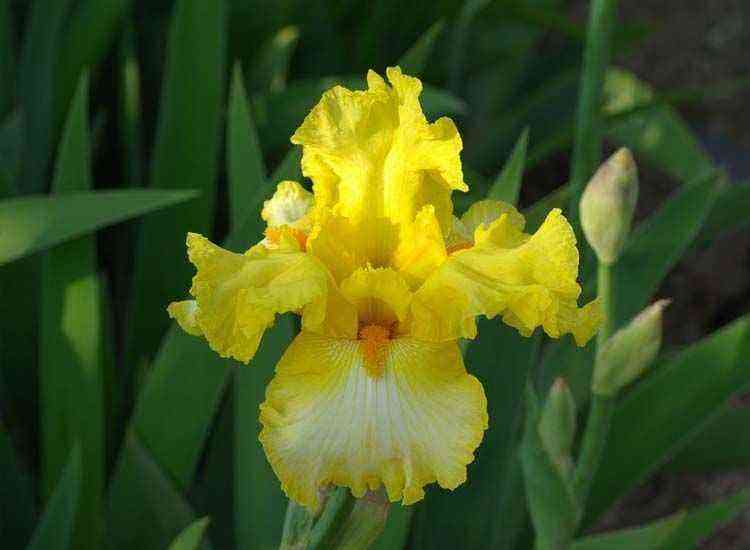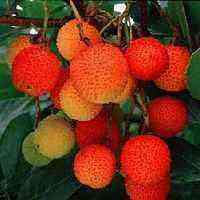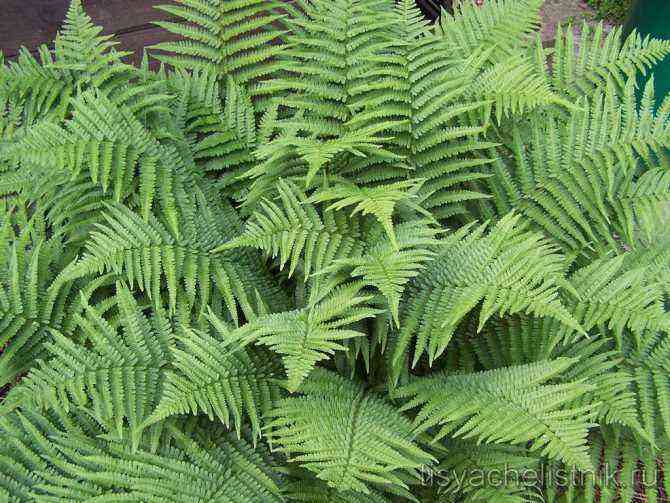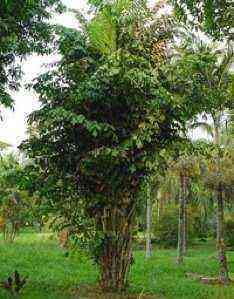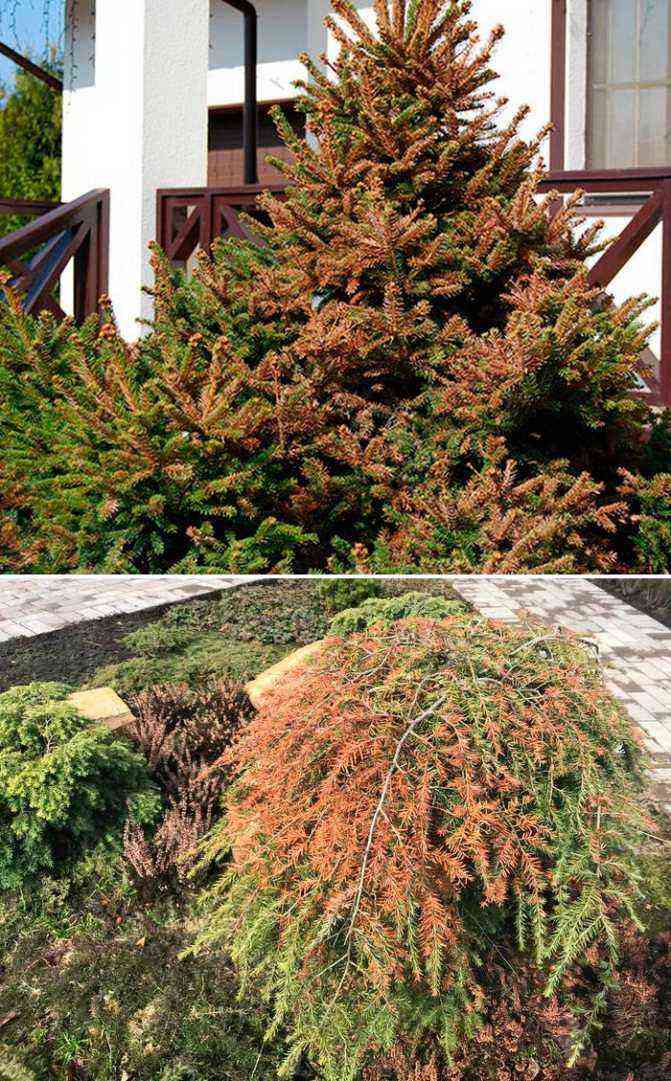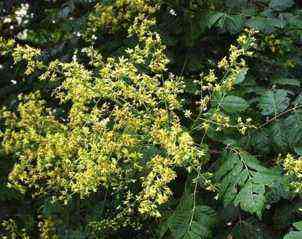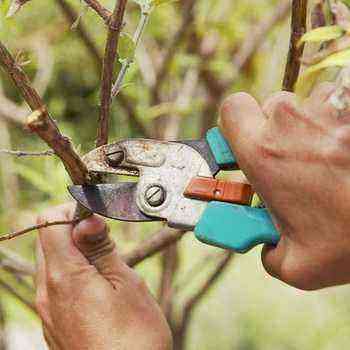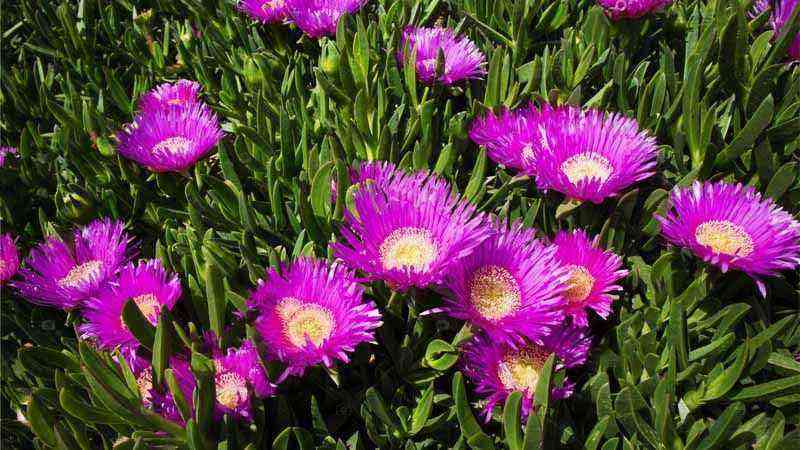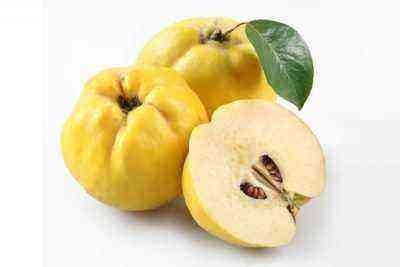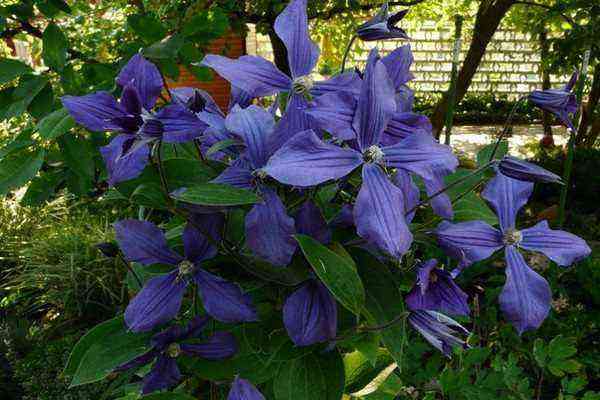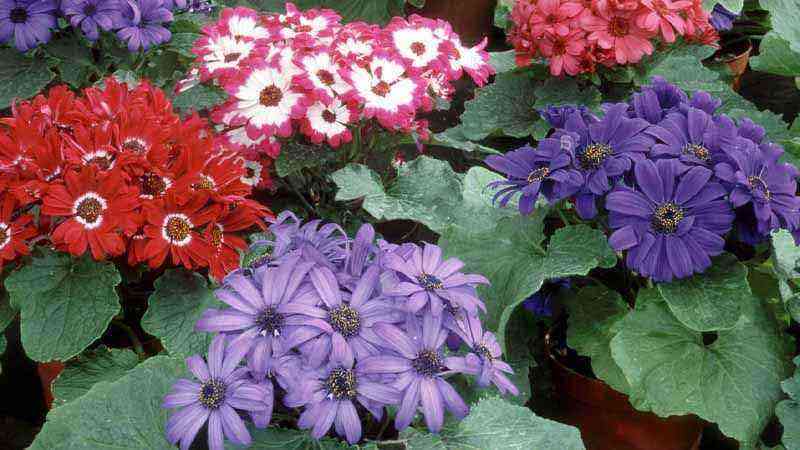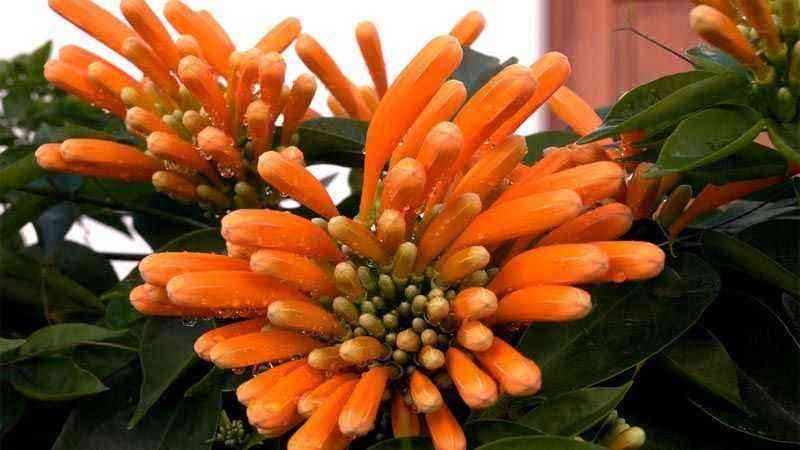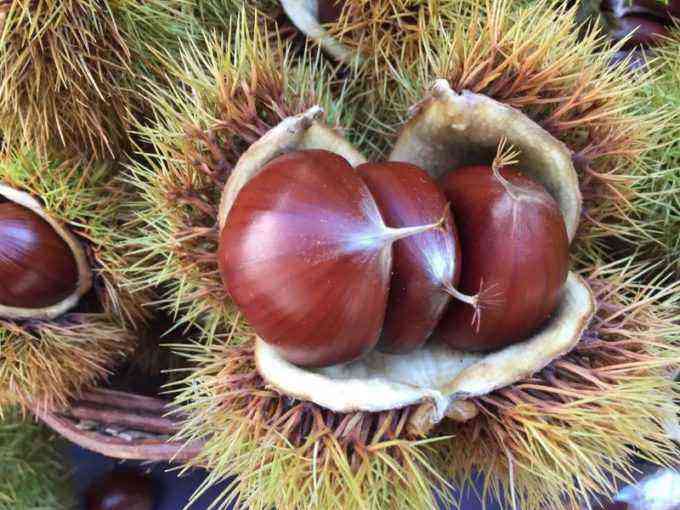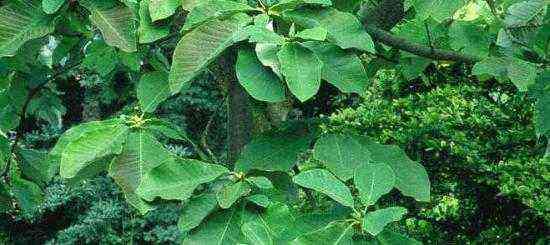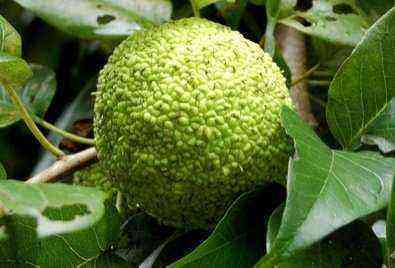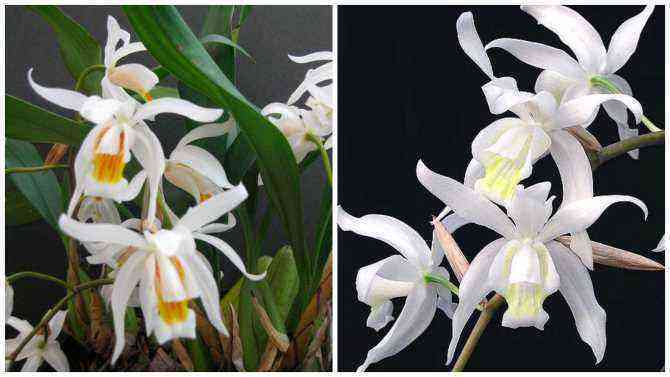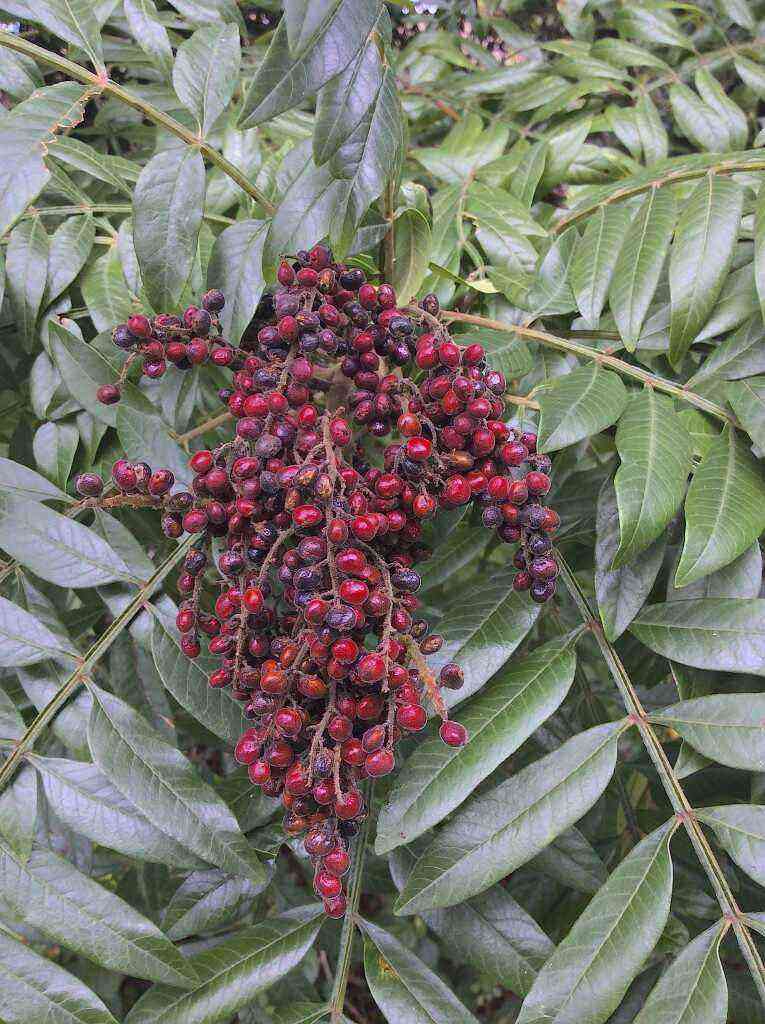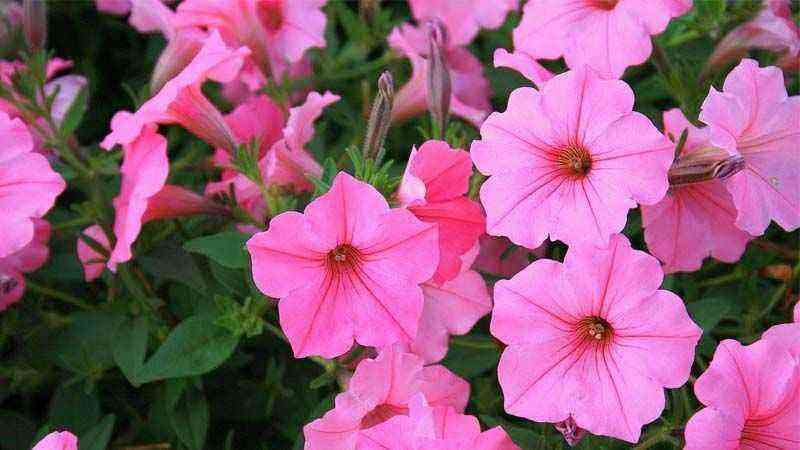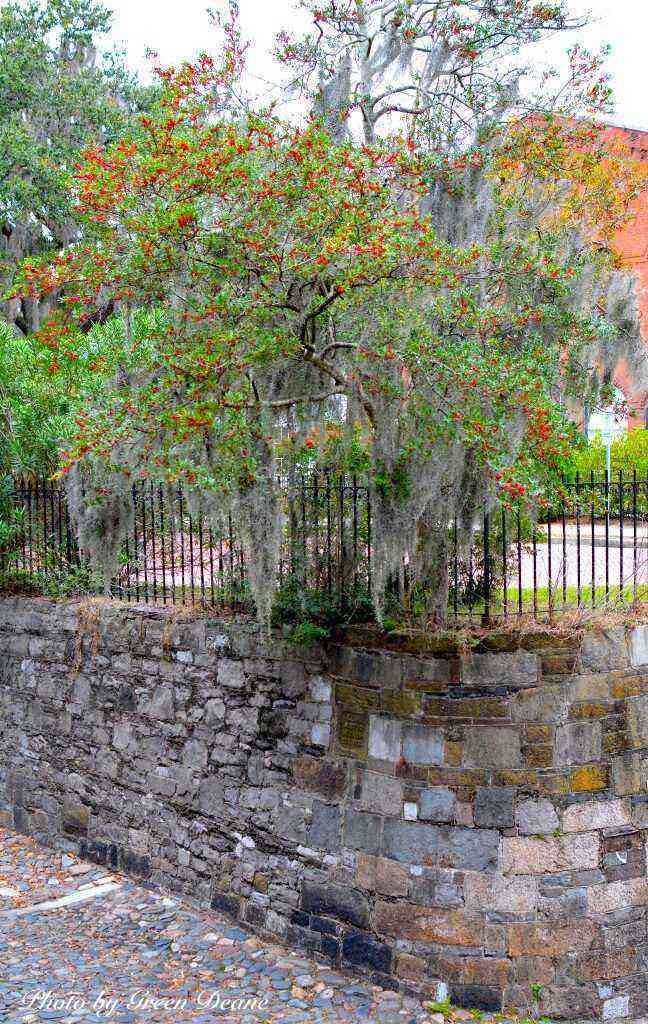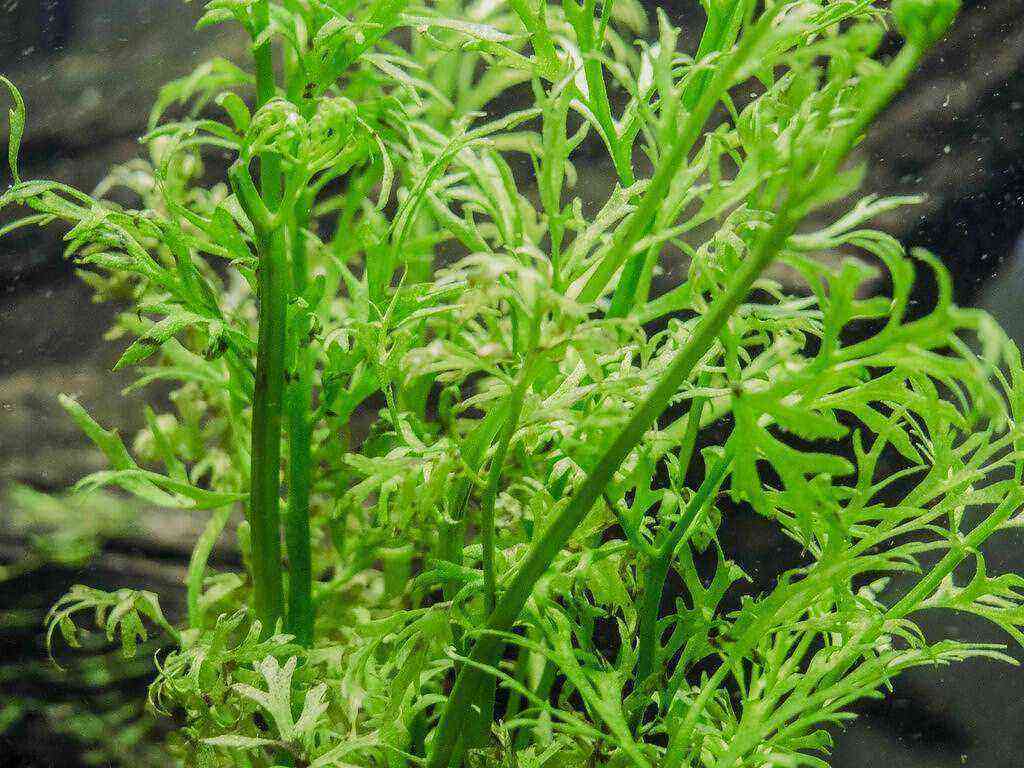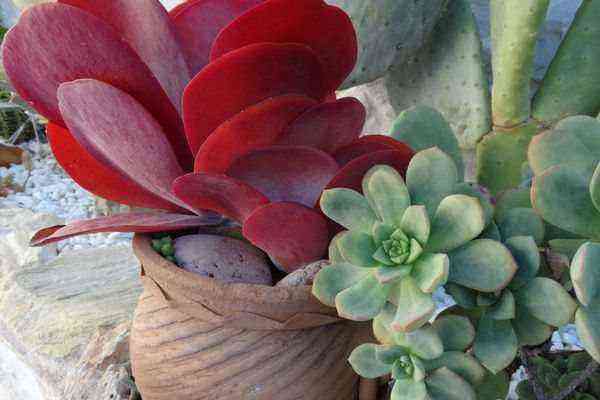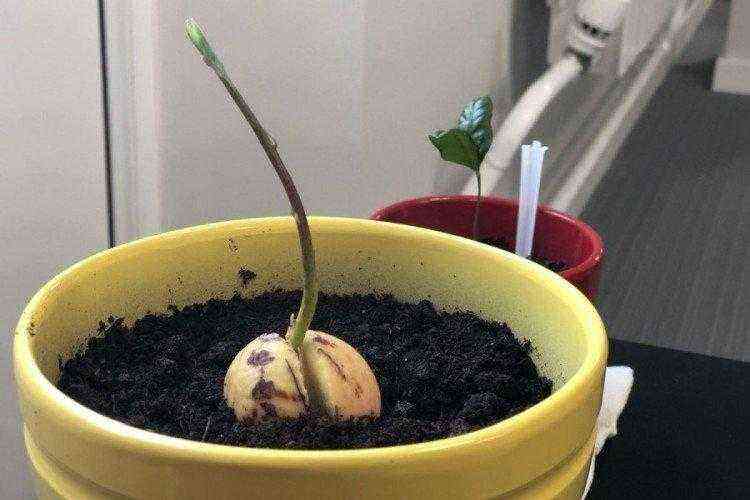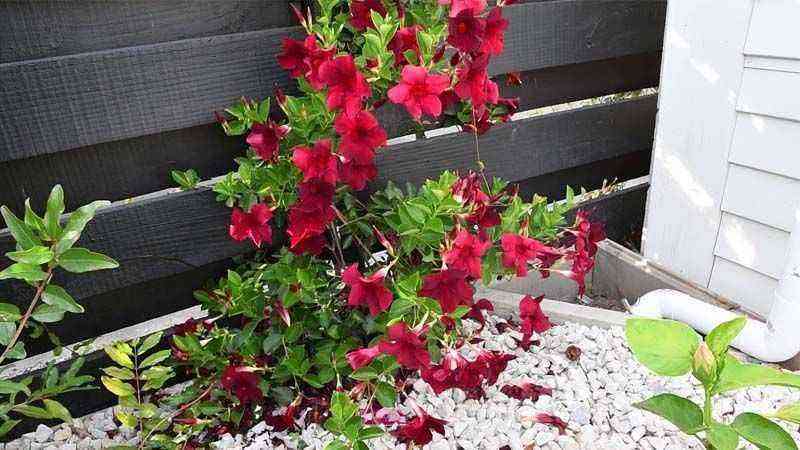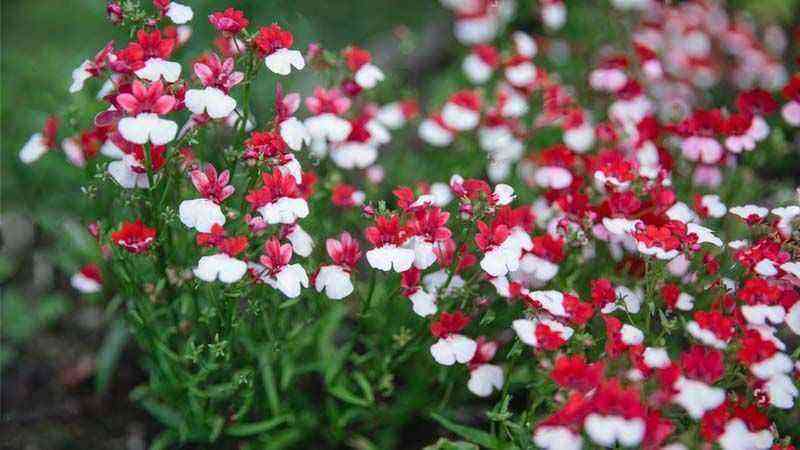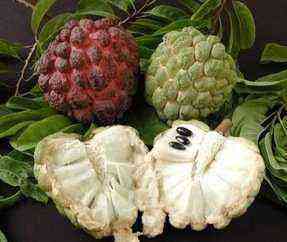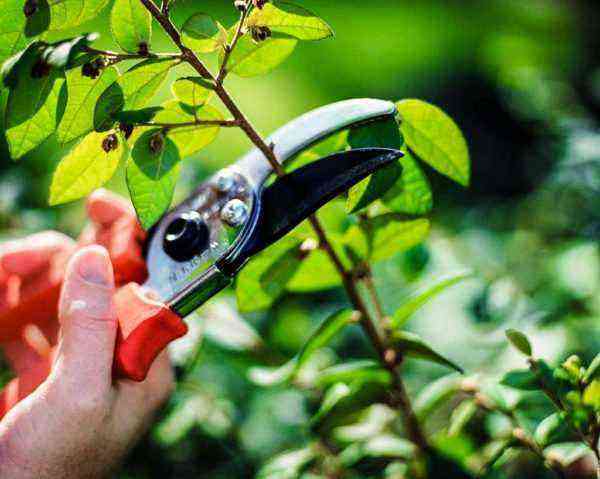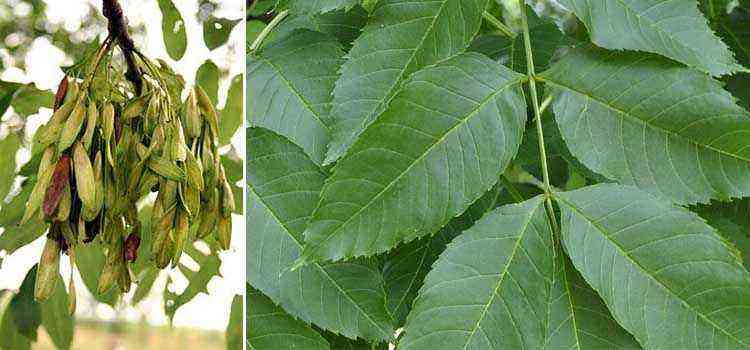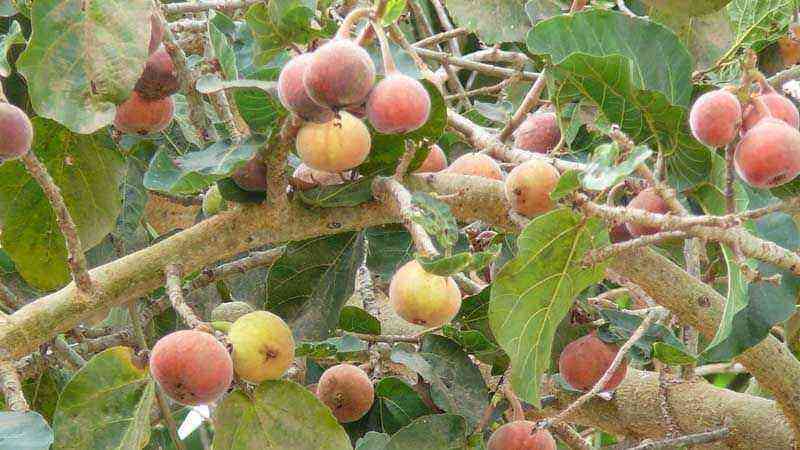How Irga reproduces: planting by seeds and cuttings at home
Irga is rightfully considered an unpretentious plant that does not require special care, like daylilies, the planting and care of which we described earlier. The bushes of the plant usually occupy the most distant places on the site, next to heather flowers or recently planted and well-groomed gray spirea. However, such an unassuming culture is a unique plant of its kind.
Irgu is also grown for decorative purposes. The plant belongs to the Rosaceae family, it is a deciduous shrub, no less attractive than the grown boxwood, or a small tree.
There are about 25 plant species (some sources indicate about 18 species). But in our area you can find three common types of irgi: round-leaved, spiky, less often Canadian.
Shrub features
This amazing plant has many names. For example, in England, it is called “shade bush”, “useful berry”. The name “korinka” coincides with the Russian because of the similarity of the fruit to the Mediterranean grape, which also has small berries. Also in our area, the fruits are called wine or baby berries.
This culture grows in natural conditions on the edges of the forest, in the forests, on the slopes of mountains at an altitude of up to 2000 meters, like rock junipers, about planting and caring for which read here posadka-i-uxod-za-mozhzhevelnikom.html, and can even be found in the tundra.
Irga, like the Chinese Maple, only needs planting, which is facilitated even by birds in natural conditions, and then she is able to take care of herself. The plant is not afraid of drought and wind, any soil is suitable for it (except for wetlands), it is a winter-hardy crop.
The adaptability of the irgi to various living conditions is determined by the root system, which penetrates the ground to a depth of 2 meters and grows in a diameter of 2-2,5 meters. Due to this, the plant easily tolerates shaded areas, the environment is not afraid of gas pollution, it rarely suffers from ailments and does not suffer from parasites, it grows quite quickly and easily tolerates pruning, unlike, for example, delicate irises, the cultivation of which in the open field is described in the material …
One of the advantages of irgi is its vitality., it can grow for many years (shrubs can live up to 70 years, and the trunks can reach a height of 8 meters and live up to 20 years). The plant is a good honey plant.
However, all the delights of a shrub can be overshadowed by the presence of numerous root shoots, which will have to be dealt with regularly. In addition, it is better not to plant irga in places where cars are parked, since crumbling berries leave traces that are difficult to wash. This circumstance is also taken into account when planting a plant near paths made of light materials, which may also suffer.
Important rules for boarding, seat selection
If you have a garden plot, then when planting irgi, first of all it is necessary to determine the place… The irgi bush grows strongly over time and takes up a fairly large area in the garden, so you need to plant it so that it does not interfere with the rest of the fruit and berry plants in your garden. Also, the irgi has abundant growth, which over time will litter your site and cause inconvenience. Better to plant irga somewhere in the corner of the garden. Approximate distance from other trees from 2 to 5 meters.
Irga is a spreading bush, therefore, when planting, you should maintain a distance of 2 – 5 m from neighboring plants
You also need to consider the types of soil your plant will grow on. Although the irga is unpretentious to the types of soil, nevertheless, it does not like the close location of groundwater, since the root system goes 3-4 meters deep and will be in constant contact with moisture. This can lead to root rot. Therefore, it is better to plant on light, fertile soils. Such soils contribute to the minimum formation of root shoots.
When planting irgi, the illumination of the site is important, she loves partial shade very much… With strong shading, the plant will stretch out strongly during growth, the berries will be small and not sweet. They may even crumble without ripening.
Features of reproduction
Irga reproduces in the following ways:
- vegetative: dividing the bush, using root shoots, cuttings, grafting;
- using seeds.
Concerning seed propagation, then before planting, all seeds must be thoroughly washed under cold water, just like when growing astilba flowers, for planting and caring for which read the article . In this way, the pulp is separated from the unripe seeds, which float to the surface of the water. This procedure should be carried out several times until only full seeds remain, which will be at the bottom of the vessel with water.
The time for planting seeds is the first autumn months immediately after they are released from the berries of the plant. Before planting seeds in open ground, it must be abundantly moistened. Before the spring sowing of the lawn, the seeds must undergo a stratification procedure (within three months). The first shoots appear in the spring, they may appear after a year.
After several full-fledged leaves are formed, they must be dived. The offspring that is obtained when growing seeds of irgi are uniform. Perhaps this situation is explained by this method of reproduction, which is asexual.
Of the plant methods, the plant is easiest to propagate with the help of root shoots and dividing the bush, it is more difficult to propagate by cuttings and grafting.
Digging out root shoots, those shoots with a well-developed rhizome system are subject to selection. Shoots are planted vertically, they need constant moisture and maintaining a sufficient level of soil moisture.
Multiply bush division a younger plant is possible, and old shrubs are not used for these purposes. This method is used only by amateur flower growers, and is not used for mass propagation in a nursery.
RџSЂRё grafting shrub, it is necessary in the summer to select growths at the age of one year, having a length of 15 cm. Then the cuttings are cut and planted in special greenhouses. The soil base for the further formation of the root system should consist of several layers. A layer of pebbles (up to 40 cm) is poured onto the bottom, then a mixture of light soil and manure (up to 25 cm), the top is covered with sand (up to 5 cm).
After planting, the cuttings need watering, after which they must be covered with foil. If there is high humidity in the greenhouses, then after 25 days, adventitious roots will begin to form on the cuttings… When processing with special means (Kornevin or Fiton), the rooting rate of cuttings will increase significantly. Next year, the cuttings can be planted outdoors. And in the fall, with good development and proper care, it will be possible to plant in a permanent place.
For grafting, seedlings of spicate or common mountain ash are used to grow fruit varieties of the plant. This method is used very rarely. Vaccination is carried out at the usual time.
Care of the plant
Watering and top dressing
The shrub is one of the plants that are practically not cared for. To achieve a high yield of the plant good watering is necessary… To strengthen the bush, old trunks must be cut, long branches, sluggish, painful shoots must be removed.
Plant feeding is carried out in the summer with the use of liquid fertilizer… For these purposes, ammonium nitrate or 10% solution of poultry manure is used. It is better to fertilize the plant in the evening hours after good moisture.
Trimming
Shrub pruning and shaping is carried out in early spring, when the plant has reached 3-4 years… The plant is best formed as a multi-stemmed shrub, consisting of strong basal shoots. In the spring, all root shoots are cut off at the surface of the soil, except for a few shoots, which are located closer to the base of the shrub.
Rejuvenating pruning is performed at the age of ten, when the annual growth begins to weaken (less than 10 cm). First you need to thin out the shrub by removing weak, elongated and sluggish shoots. Long shoots must be shortened to two meters. After cutting, the places are subject to processing with a garden varnish. Proper care and attention will extend the life of your “ward” up to 70 years.
Diseases and pests
The shrub is also not very susceptible to various ailments, but it can be damaged by insects that like to gnaw leaves. Birds, which like to feast on ripe irgi fruits, cause great damage to the fruits of the shrub. In order to preserve the harvest, you can throw a net with small cells over the shrub.
Caterpillars love to “eat” on young leaves of a bush, which gnaw holes of various shapes. Spots on the foliage of a dark brown, rounded plant, resembling rust, are the cause of fungal disease – phyllostictosis and ascochitous spot .
Also, the presence of brown rot on the berries indicates monilinosis. A disease like necrotic necrosis affecting the bark of a bush, can lead to drying of the shoots and branches of the plant. In addition, cytosporosis contributes to the drying of branches, in which dark pycnidia are formed on the root shell, leading to a rough surface of the shoot.
The appearance of white fibrous rot at the base of the trunk of an old shrub indicates the “work” of the gray tinder fungus.
Diseases and pests
Despite the resistance to various diseases, the appearance of leaf spot or damage to fruit rot is possible. Rust-like spots on the leaves are a clear sign that the plant has a fungal disease.
Moniliosis is an ailment in which brown rot forms on the fruits, which can completely ruin the crop. Another disease that can affect irgu is necrotic necrosis of the bark, leading to the drying out of shoots and branches, as a result, the bush may die.
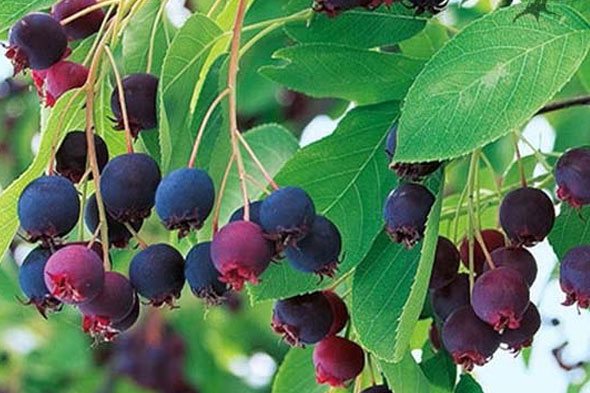
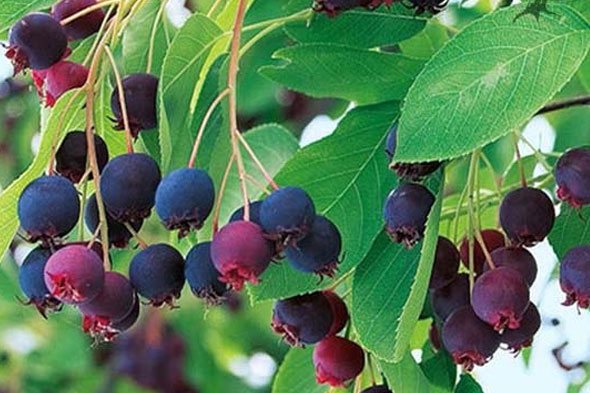
Insects that can damage the plant:
- motley moth,
- leaflet
- irgovy seed eater,
- apple aphid,
- hawthorn.
Timely treatment with insecticides and antifungal agents is the best protection for the garden. It is enough to carry out one procedure in early spring to avoid problems. If pests are found in the summer, it is recommended to spray the bushes with an infusion of red hot pepper. Cleaning of fallen leaves and plant debris is an effective prevention against the appearance of pests on the shrub.
Features of individual varieties
The most common types of shrubs in our area, which are widely used in gardening, are:
- Irga cherry – the height of the multi-stem shrub reaches four meters, has a dark gray bark. The foliage is oval in shape, which in autumn changes color from green to bright yellow. The flowers are white in color with a faint odor. The berries are purple and very sweet.
- Blood red – is a graceful shrub with a rising crown. The foliage has an oval-oblong shape, the length of which reaches 5 cm. In autumn, the color of the foliage changes from bright green to orange. The flowers are large with long petals. The berries are sweet, black.
- Canadian (she is Irga Lamarca) – grows up to 8 meters, is a tree-like shrub with thin drooping branches. Young foliage is pink, purple, and dark red or orange in autumn. The size of the flowers is large, they gather in loose inflorescences. The berries are sweet, have a fleshy flesh of a dark pink color.
- Ordinary – is the most “wild” and undemanding representative of the plant. Fruits in small, not sweet berries, but containing many useful substances.
- Round leaf grown as an ornamental plant, however, the berries are just as tasty and healthy.
We also recommend that you read in more detail about how to make a hedge from fir trees.
Description of irgi
Irga is a very unpretentious plant with delicious berries, somewhat reminiscent of small black grapes. The bushes are interesting and very beautiful at any time of the year. In spring, the irga has green leaves and white flowers, in summer – red berries, and in autumn – yellow leaves and purple berries.
It is a deciduous shrub of the Rosaceae family with a wide spreading crown and oval toothed leaves. The flowers are white, complex and numerous, collected in clusters at the ends of the shoots. After flowering, fruit ovaries are formed that do not fall off. The fruit is a purple or bluish-black apple with a diameter of up to 10 mm, tasty and sweet with a tart and sour taste, contains many useful substances.
Irgi flowers are white
Reproduction of Irgi
Irga reproduces well by seeds (in autumn, after collecting seeds or in spring after stratification), green cuttings (in summer), root suckers (in spring and autumn), dividing the bush (when transplanting), grafting on mountain ash (during sap flow).
When propagated by seeds , sowing seeds in open ground is carried out in the fall of the year of their collection. For spring sowing, seed stratification is required for three months in wet sand in the basement.
Seeds are sown in well-prepared, fertilized ridges, watered abundantly. Usually, seedlings appear in the fall, less often in the next spring.
With good care, one-year-olds reach a height of 10-15 cm, two-year-olds reach 30-40 cm.
Seedlings are transplanted to a permanent place in two years, also in spring or autumn.
For breeding irgi by root suckers, use root shoots, which grows in sufficient quantity annually.
Young offspring are separated from the mother bush and transplanted to a permanent place in spring or autumn.
When breeding irgi by grafting, two-year-old rowan seedlings are used as a stock. Vaccination is carried out in the spring, during the period of sap flow, at a height of about 10-15 cm. If you want to get a standard form, then the vaccination is done at a height of 75-80 cm.
How and what to fertilize irgu
Fertilizers applied to the planting pit are quite enough for the growth and development of irgi for 4 years. In the future, a complex of mineral fertilizers is used as top dressing. Every year, for digging in the fall, 2 buckets of humus, 0.2 kg of potash fertilizers and 0.3 kg of superphosphate are introduced into the soil.
In the spring, irga needs nitrogen fertilization. During this period, you can feed the shrub with liquid organic matter. Under each bush, pour half a bucket of a 10% solution of chicken droppings. Top dressing is applied after abundant watering or rain.
When adding fertilizers to the soil, it is recommended to retreat from the root collar from 0.2 to 0.3 meters. This is necessary so that fertilizers do not burn the bark of the plants.
The most important thing about breeding irgi
It is difficult to imagine a garden plot without this beauty, lushly blooming in spring and abundantly bearing fruit in summer. Sometimes, in order to ennoble your garden with irgo, you just need to buy seedlings. However, not all nurseries grow it, preferring more traditional crops. Gardeners have to take care of the production of planting material themselves. You also need to know the different ways of breeding irgi in order to grow a specific variety, share with a neighbor, experiment with your favorite crop, and even earn extra money.
Which breeding method to choose?
Irga is an unpretentious crop both in cultivation and reproduction. Depending on the needs and the goals set, it is possible to choose almost any of the methods. How does Irga breed?
Vegetative reproduction
You can dwell on one of the techniques of vegetative reproduction:
- division of the bush;
- root shoots;
- layering;
- cuttings;
- vaccination.
Important! Using these methods, it is possible to obtain planting material that has all the characteristics of the mother plant.
Reproduction by seeds
Irga successfully reproduces by seeds. The seedlings grown in this way will retain some of the maternal characteristics, but they will also acquire some new properties. This method is good for those who like to explore and get something new.
Root shoots – a source of planting material
Bushes that are actively developing usually form a sufficient amount of root growth for reproduction. Carefully digging a sprout at some distance from the mother plant, you can get a ready-made irgi seedling. When choosing root shoots for reproduction, one should prefer one that has already begun to branch: it will have more roots of its own, therefore, it will take root faster.
Helpful advice! In order for the resulting seedling to feel better, it should be separated from the main bush with a piece of the mother root, which will feed it for the first time.
This breeding method is good for its speed and simplicity. But, unfortunately, in old bushes and root shoots, it is difficult to form, so you have to use other methods.
Trimming
The irgi bush very often grows thickened, so it is pruned. It is recommended that pruning be carried out in the spring, when the irgi sap flow has not begun… Cut dry or poorly developed tree shoots. A couple of stems are removed annually, leaving young shoots in their place. Also, the tops of the branches are pruned by a few centimeters in order to form a bush of the correct shape, and also so that there is no excessive thickening. They also cut out the lateral root shoots so that it does not damage other fruit trees on the site.
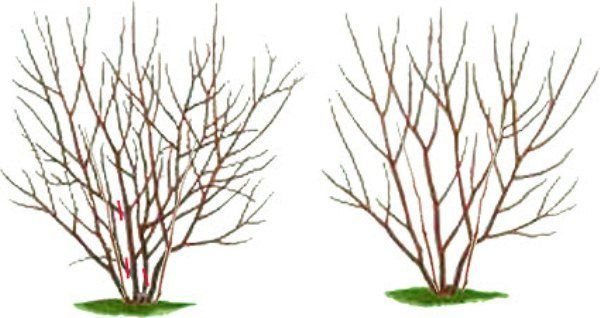
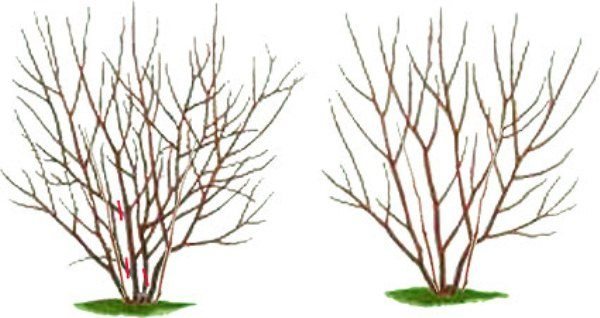
Pruning scheme and formation of the irgi bush
Pruning makes the irgi bush more attractive and also promotes better fruiting.
After cutting off branches and shoots, it is necessary to close the cuts… This is done using garden varnish or paint on natural ingredients. Cut off dry branches and fallen leaves should be removed from under the bush, this is necessary in order to protect the plant from pests that can start in old leaves.
Horizontal or arc layering
It is necessary to start work in the spring or at the very beginning of summer, giving the young sprout enough time for the formation of roots.
- If you need to get one or two new bushes, a pair of well-developed shoots of a one-year or two-year-old plant is folded back with an arc. They are sprinkled at the point of contact of the branch with the soil with a slide of nutritious earth. To make the contact of the branch with the ground more reliable, it is advisable to pin the shoot.
- To get a large number of seedlings, it is preferable to make horizontal layers. To do this, the soil near the bush is loosened, a furrow is made on it and the selected branches are horizontally laid there. They are pinned to the ground in several places and sprinkled with fertile soil. With this method of reproduction, it is possible to obtain the number of seedlings according to the number of buds on the buried branch.
When young shoots reach a height of 10-15 cm, they are spud. By the fall, the saplings of irgi will be ready. But it is better to transplant them to a permanent place in the spring.
How to properly propagate irgu
There are several ways of breeding irgi:
- seeds;
- cuttings;
- layering;
- division of the bush.
Saplings that are grown from seed grow well and quickly. It is possible to propagate irgi bushes by dividing the root growth only in a formed plant, but by no means an old one. To get a standard shape, the cuttings are grafted with a stock. Reproduction of irgi by branches is a favorite method for novice gardeners. The best and simplest planting material is considered to be three-year-old seedlings with a fully formed root system.
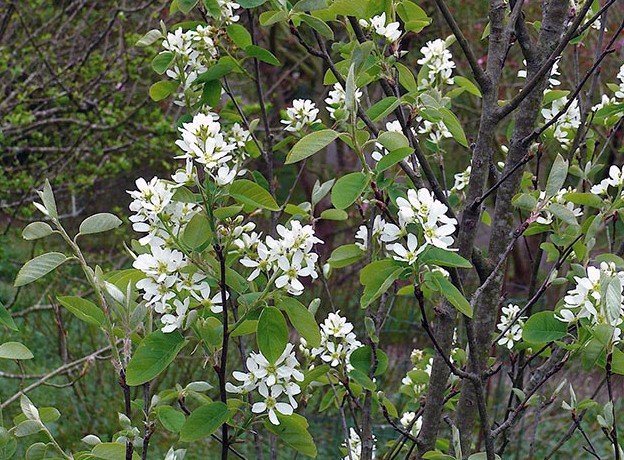

Cutting
Experienced gardeners like to grow irgu by cuttings, since this requires certain knowledge and experience. Cuttings from last year’s growth are cut in the fall, and then stored for planting until spring, dug in the sand or earth.
Two-year-old rowan trees are used for the stock. When the spring awakening comes, the cuttings are dug up, the roots are washed and the trunks are cut: above and below the bud. The lower end of the irgi seedling is made sharp and inserted into the rootstock incision. This place is tightly wrapped with plastic wrap. After grafting, the plants are placed in a greenhouse until they grow together. Irgi shrubs can serve as stock for apple and pear trees. This plant imparts early flowering and frost resistance to fruit trees.
Grafting plants
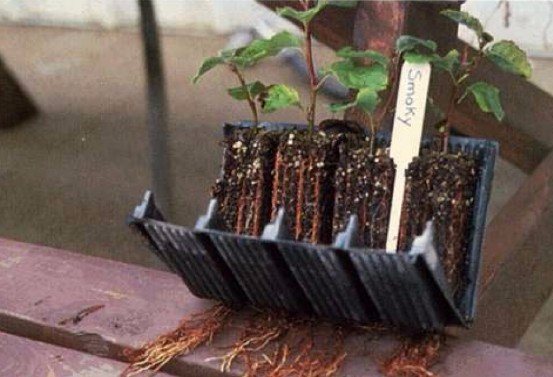
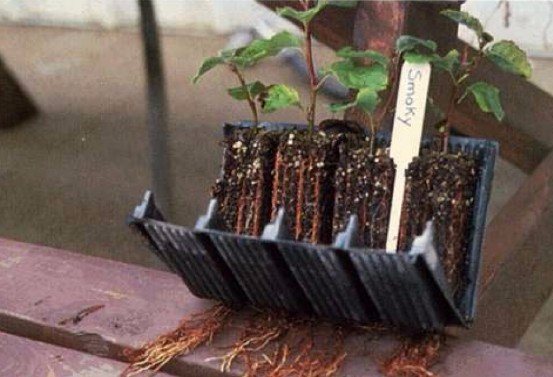
In June or July, cuttings are cut from the tops of the shoots of five-year-old shrubs. In length, they should be no more than 15 cm. From each cutting it is necessary to remove the lower leaves, leaving a few upper ones. Workpieces with lower sections are placed in a root-forming agent for 12 hours, after which the roots are washed in clean water. After that, you can plant the irga in clean soil in a cool greenhouse. This is done at an angle and at a distance of 4 cm. The soil is sprinkled on top with a layer of sand 10 cm thick. Ideally, the cuttings should be 20 cm below the greenhouse ceiling.
After planting the cuttings, water them so that the water splashes. The temperature inside the greenhouse should not exceed 25 ° C. To do this, you need to remove the top of the greenhouse from time to time and ventilate the cuttings. Watch the soil – it should be moist. After the cuttings take root, you need to remove the greenhouse dome during the day, and after they get stronger, the dome should not be worn even at night.
After three weeks, the cuttings will develop a strong root system and are ready to be transplanted into a temporary bed.
Here they need to be fertilized with manure diluted with water in a ratio of 1: 8, or ammonium nitrate dissolved in a bucket of water. Caring for cuttings is no different from caring for an adult shrub, and next fall they are transplanted to their permanent habitat.
Reproduction by layers
One-year strong shoots or two-year branches with powerful growths are suitable for this breeding method. Add them in in the spring, as soon as the sun warms the soil a little. The top layer under the bushes, from which the bends will be taken, must be dug up, sprinkled with fertilizers and leveled. After that, plow through the soil and fix the shoots that grow low in the furrows. The tops need to be pinched. When shoots 12 cm in height grow from the buds, they must be half covered with humus. When the shoots grow another 15 cm, the procedure should be repeated. Layers that have taken root are planted next fall to a permanent place.
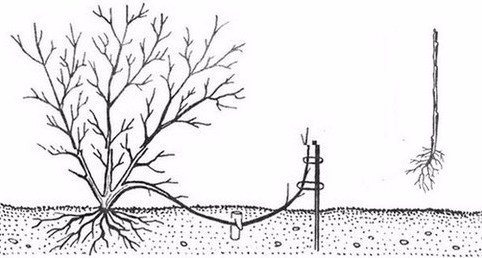
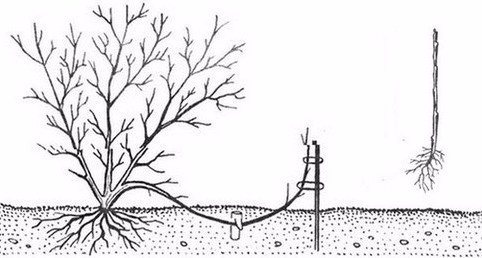
Irga is easy to cut
The best time for breeding irgi by cuttings is the first half of summer. By this time, its young shoots have already reached the required length (12-15 cm), have grown stronger and can be harvested for reproduction. You should not delay with this procedure, since lignified cuttings take root worse, while when breeding irgi with green cuttings, the rooting percentage can reach 60%.
For propagation, cuttings are taken on which there are at least 4-5 leaves. The bottom 2-3 leaves are removed completely, the top half are cut in order to slightly reduce moisture evaporation. Finished cuttings are placed in a small greenhouse filled with a specially formulated substrate. Its lower layer should be pebbles or gravel (30-40 cm), the middle layer should be fertile soil or humus (25-30 cm), about 5 centimeters of clean sand is poured on top.
Expert recommendation! In order for the green cuttings to root more reliably when breeding irgi, it will be nice to treat their lower part with one of the root formation stimulants before planting in greenhouses.
The cuttings are placed in the ground in such a way that 2-3 lower buds are immersed in it: it is near them that the roots will form. The first roots will appear about a month after planting. During the next season, young plants will gain strength, develop a full-fledged root system and by autumn they will be ready for transplantation to a permanent place.
Spring cuttings
It is somewhat more difficult to grow a new plant from a fragment of a shoot when cutting irgi in spring. Only the use of rooting stimulants will help achieve a positive result. But, if you prefer to work with seedlings in the spring, cuttings cut at this time can be successfully used differently.
The fact is that spring is the best time for breeding irgi by grafting. This is where spring cuttings are needed. And it is grafted quite simply.
Landing in open ground
Irga tolerates transplantation well and takes root, but only if the root system is well preserved.
Selection of planting material
For planting, it is better to choose frost-resistant species and varieties that are distinguished by a high yield of delicious berries. If the irga is intended to create a hedge (and it turns out to be dense and decorative), then the yield does not matter so much. The age of the seedlings comes first. They have the best survival rate at the age of 1-2 years.
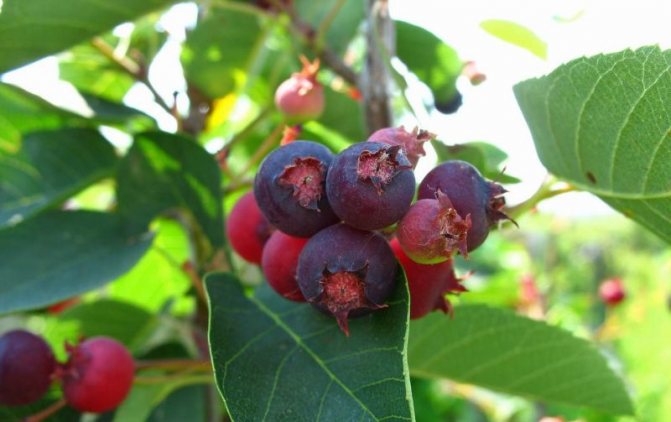
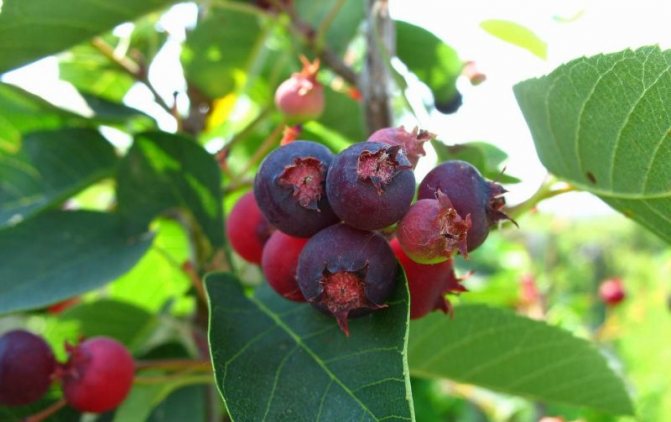
When choosing a seedling, pay attention to the following indicators:
- a healthy root system with no signs of drying out and rot;
- the stem of the seedling is well developed, the bark is intact and has a color characteristic of the variety.
Nurseries have closed-root seedlings grown in large containers. For planting, they are preferable. Such a plant will not waste time on restoring the root system damaged during transplantation, it will quickly take root and start growing. Container seedlings have no time limits for planting – they can be carried out throughout the growing season.
Soil preparation and site
Irga is a long-liver, so the place for planting it must be chosen deliberately, taking into account the growth of the plant in width and height, as well as its requirements for growing conditions.
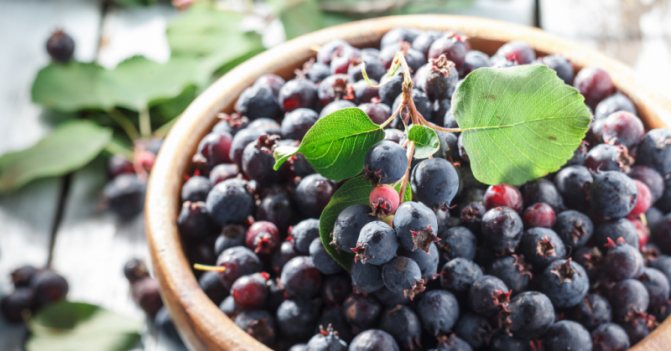
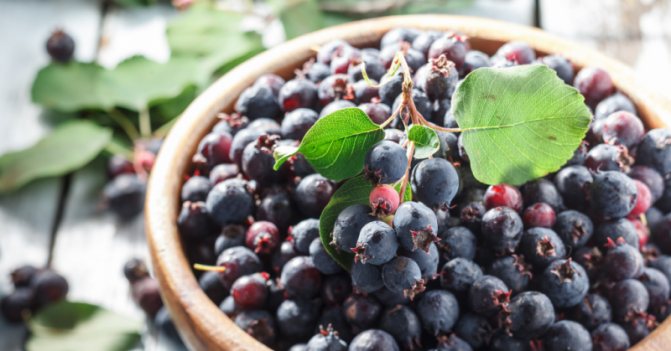
It must meet the following criteria:
- the place is chosen well lit, it is in this case that the yield will be maximum;
- the level of standing of groundwater is low;
- the mechanical composition of the soil should be light (sandy loam or loose loam with a high humus content), and heavy soils improve;
- soil acidity value from 6,5 to 7.
The soil is cleared of weeds. Better if the previous season she was kept under black steam. It is optimal to sow it with legumes that improve fertility. Before digging, up to 10 kg of well-rotted compost or humus and 40 g of potash and phosphorus fertilizers are applied to each square.
Landing terms and rules
This berry crop is planted in early spring or late autumn. In the first case, the buds should not swell, and when planting irgi in the fall, the tree should already shed its leaves, but about 3 weeks still remain before frost – this is the time required for rooting. Each seedling requires a feeding area of up to 4 squares, so the optimal distance between them is about 2 meters. When forming a hedge, saplings of irgi are planted at a distance of 0,5-1 m from each other.
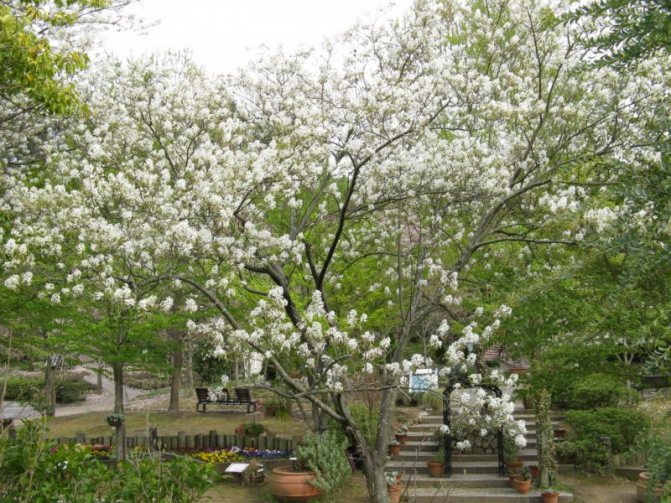
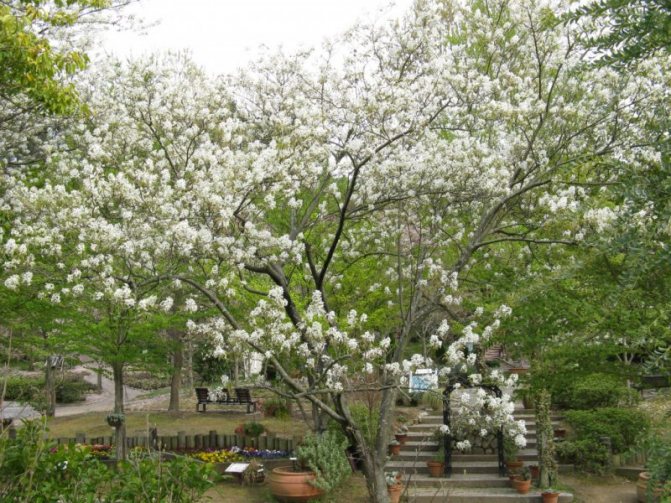
Landing Algorithm:
- dig a hole with a depth and diameter of about 60 cm (on heavy soils – about 70 cm), discarding the top fertile layer in a separate heap;
- for a hedge, dig a trench 40 cm wide and 30 cm deep;
- mix the top layer with a bucket of humus, adding 300 g of superphosphate and 200 g of potassium salt, which can be replaced with 1 kg of ash;
- a mound of the prepared mixture is poured at the bottom of the pit;
- a seedling is installed and the roots are carefully straightened; if there is damage, they are removed by sprinkling the cuts with crushed coal;
- cover the root system with prepared soil, without burying the root collar into it;
- a bucket of water is poured under the bush;
- mulch the soil with humus;
- if the root system is damaged during planting, the stem of the seedling is shortened by cutting it into 4-5 buds.
Variety of vaccinations
Irga can be used both as a rootstock and as a scion.
We vaccinate irgu
It can be engrafted:
- on irgu of another or the same type;
- on a mountain ash;
- on chokeberry;
- on the hawthorn.
Of the listed rootstocks for irgi, ordinary mountain ash is most often used as the most affordable option that accepts vaccination well.
We vaccinate on irgu
As a rootstock, irga is also a fertile material. Grafts of other varieties of the plant itself take root well on it, but not only. What can be grafted into Irga?
- Grafting large-fruited varieties onto small-fruited varieties is the most common option.
- By grafting henomeles onto irgu, you can get its standard form.
- Grafting pears on irgu allows you to grow its southern varieties in the northern regions, to get dwarf seedlings. As a result of this procedure, it is possible to get the first pear harvest already 2-3 years after grafting. The only negative is the fragility of the obtained seedlings. Due to the fact that the thickness of the pear trunk grows faster than that of the irgi, the life of such plants rarely exceeds ten years.
Using various methods of breeding irgi, everyone can make their garden unique, beautiful and productive.
Sources:
How to plant an irgu: timing, place and landing rules
Irga is a powerful, tall culture, its berries ripen simultaneously with currants. Irga will contain a lot of pectin (up to 7%), and this is a good natural sponge that removes toxins and toxins from the body. Irga is an absolute non-capricious berry culture. Unpretentious in care, winter-hardy and undemanding to the timing and place of planting. It will take root in any cultivated area. For the plant to feel good, it is enough to follow the basic agrotechnical techniques.
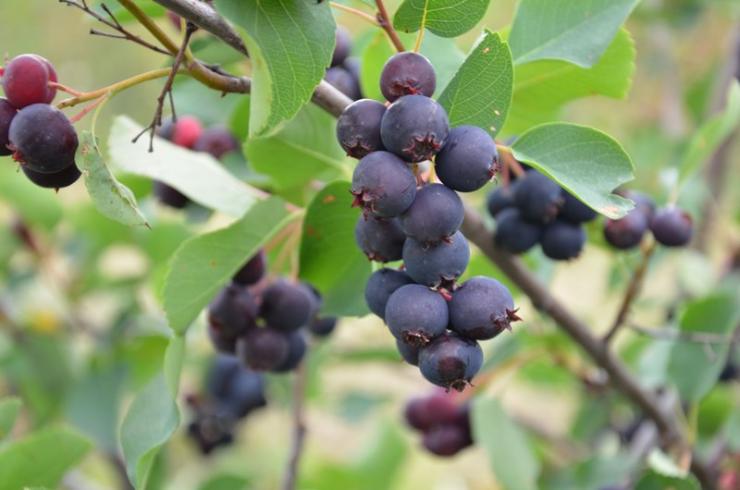
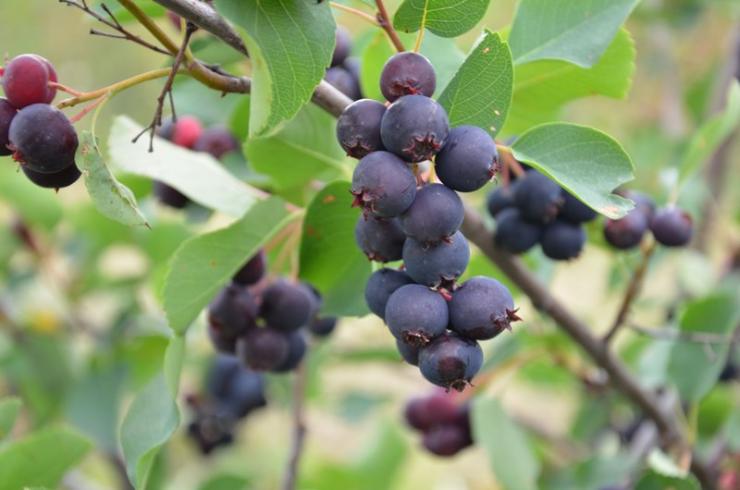
I became interested in Irgo more than 15 years ago. I was introduced to her by the outstanding and now deceased professor E.P. Kuminov, a renowned berry breeder, Doctor of Agricultural Sciences. I defended my Ph.D. thesis on irga and thanks to the seedlings carefully sown by Evgeny Petrovich, I bred the variety Starlight Night, which has been included in the State Register since 2016.
Planting dates for irgi
Irga is amazingly hardy. Even Michurin recommended irga as a rootstock for growing apple and pear in the far north.
Irga can be planted literally in frozen soil in autumn and winter. At the same time, she was not at all afraid that she would die. The main thing is that the root system of the seedling is well developed.

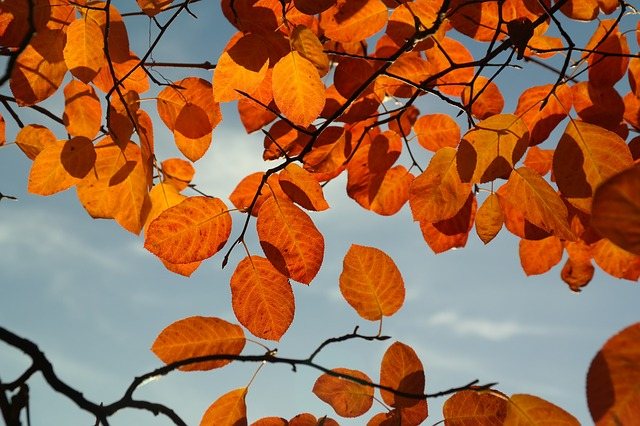
Irgi landing site
On the one hand, the irga is undemanding, so the landing site can be any. On the other hand, you need to understand that a living plant will not grow in a swamp, in a hard shade it will always reach for the light, and on poor, dense soil it will not give a good harvest.
The best place to plant an irgi:
- soils with a neutral reaction of the environment, loose, moderately moist and moderately fertile.
- in winter so that more snow accumulates, and thawed, rain, irrigation water does not stagnate for a long time,
- the place must be protected from the cold wind from the north,
- the groundwater level is at least 2 m below the soil surface.
What to plant next to Irga?
Quite calmly next to the irga, retreating 2,5-3 m, you can plant:
- black currant,
- raspberries
- gooseberry.
It is better not to plant next to irga:
- manchu nut (oppresses irgu),
- birch (absorbs a lot of moisture from the soil).
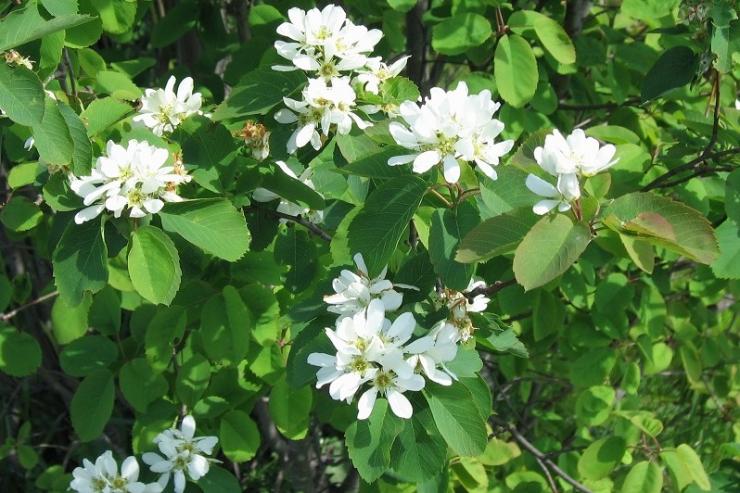
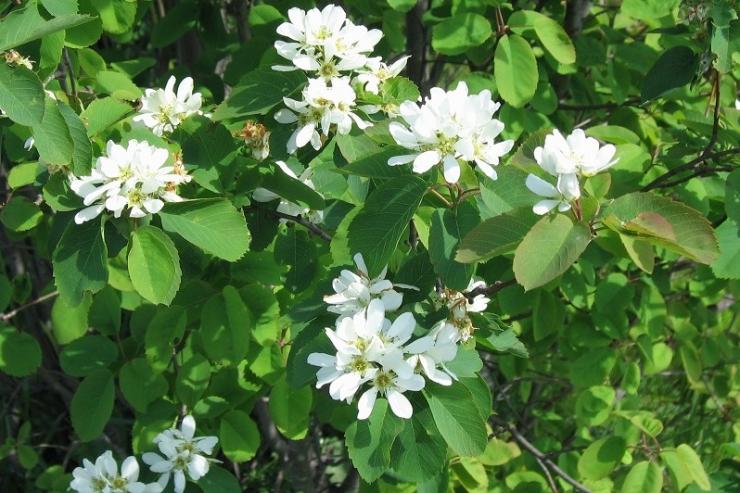
Irgi planting pit
The landing hole is prepared in advance, preferably a couple of weeks before the irgi planting. I advise you to dig a hole 25-30% more in width and depth than the volume of the root system of the seedling.
At the bottom of the planting hole, be sure to lay a drainage layer of 2-3 cm (gravel, expanded clay, broken brick, small pebbles). On top of the drainage, put a layer of nutritious soil mixture of sod land, humus, topsoil (2 kg each) with the addition of 1 tbsp. l. nitroammofoski (complex mineral fertilizer). Mix everything thoroughly and put in the base of the hole, pour out 1 bucket of water.
Irgi planting rules
We place the seedling in a pre-prepared planting hole and sprinkle it with soil:
- on the moistened nutrient mixture, we install the root system of the irgi seedling, carefully straightening the roots;
- sprinkle the roots with soil, shaking the seedling a little so that voids do not form between the roots and the soil;
- we compact the soil and pour a couple of buckets of water;
- we mulch the surface with humus with a layer of 2 cm.
Whether to deepen the root collar when planting irgi?
When planting, pay attention to the root collar – the place where the roots go into the stem:
- If you want a tree to form from a seedling, then place the root collar 2 cm above the soil surface.
- If you need a bush with replacement shoots that are actively growing from the roots, then deepen the root collar by 2 cm.
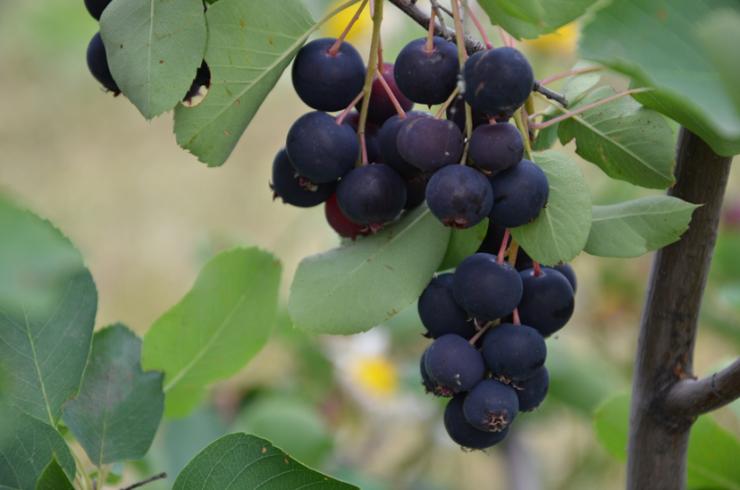

Irgi planting scheme
The irgi planting scheme depends on whether it is a species or a variety. As a rule, varieties are characterized by restrained growth, so if you plant 2 plants of irgi of different varieties, then you can leave 3 m of free space between them. The same amount of time you can retreat from fences, house walls, other plants and structures.
Features of planting species of irgi
If we are talking about the types of irgi, then the scheme and timing of planting for them will be slightly different. In total, 2 types of irgi are usually grown in the culture:
- irga alder,
- Irga canadian, or close to it in appearance, taste and size of the fruits of irga Lamarck.
Irga cherry it has a less spreading crown, so 3 m between plants is quite enough. Due to the increased winter hardiness, alder-leaved irgu and its varieties (Starlight Night, Mandan) can be planted in the fall (before the soil freezes) and in the spring (after it thaws).
Irga Lamarka or Irga canadian differ only in minor changes in the structure of the flower and are characterized by a highly spreading crown. They need to be planted less often, retreating 4 m from each other. Irga canadian, irgu Lamarka and their varieties (Slate) it is desirable to plant either in early autumn or spring. They are less winter-hardy than alder irga.
More about the types and varieties of irgi.

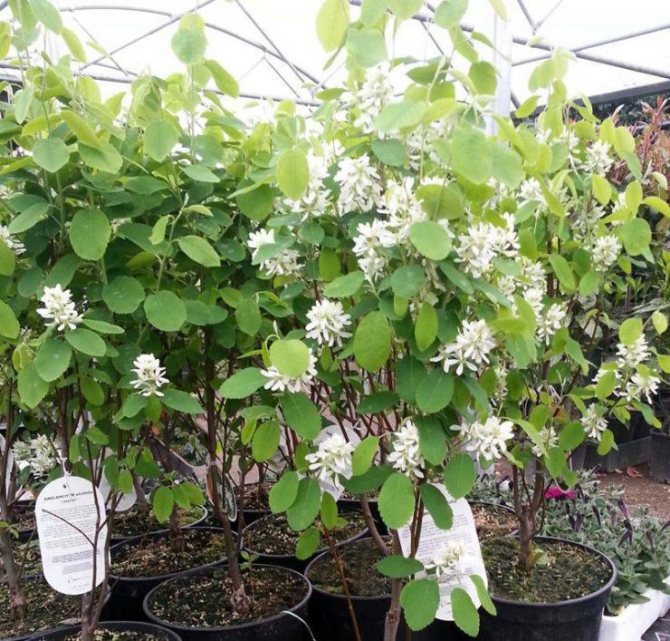
Irga care after planting
Caring for irga after planting comes down to removing weeds in the bust area, loosening the soil, and top dressing. Watering irga in drought.
To feed irgi, in the spring, a complex mineral fertilizer is applied (1 tbsp. L nitroammofoska), in the summer – phosphoric and potassium fertilizers (1 tsp. Potassium sulfate and superphosphate), and in the fall you can do with potassium fertilizers (250-300 g of wood ash ).
Read more about irga care.
Pruning irgi after planting
- If the root system of the irgi seedling is not damaged, then pruning is not needed.
- If the roots are damaged, then it is advisable to at least approximately subordinate the aboveground and underground parts, cutting off the shoots by 1/3 of their length immediately after planting or in spring.
Sanitary pruning of irgi consists in removing dry and broken shoots, those that grow deeper into the crown, leading to thickening. Shrub pruning can be done at any time of the year, even in summer. Therefore, irgu is often used in the design of an orchard, as a deciduous hedge.
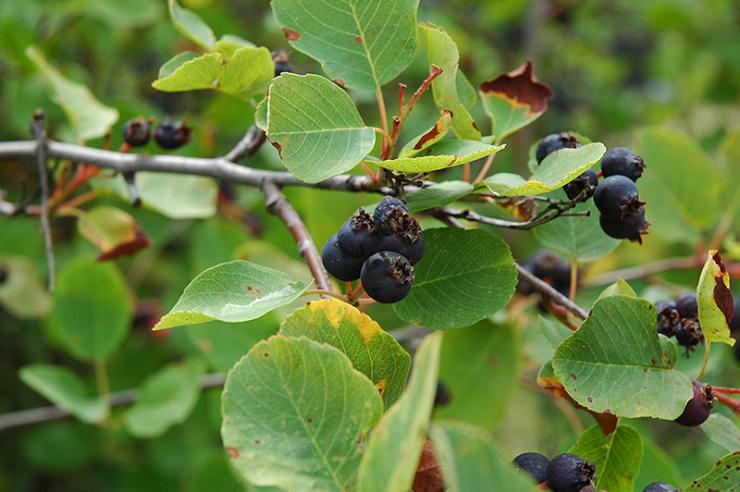
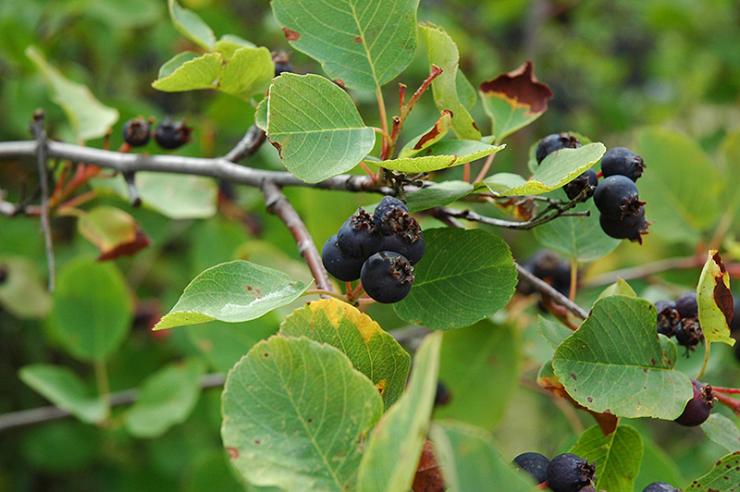
In what year does the irga bear fruit after planting?
The timing of when the irgi plants begin to bear fruit strongly depends on the seedlings:
- If these are seedlings, then the fruits will have to wait 3-4 years, subject to good care.
- If these are grafted plants (for irga, mountain ash, hawthorn), then the fruits can give already in the year of grafting (spring copulation) or the next year (summer budding).
Nikolay Khromov, Candidate of Agricultural Sciences, Senior Researcher
